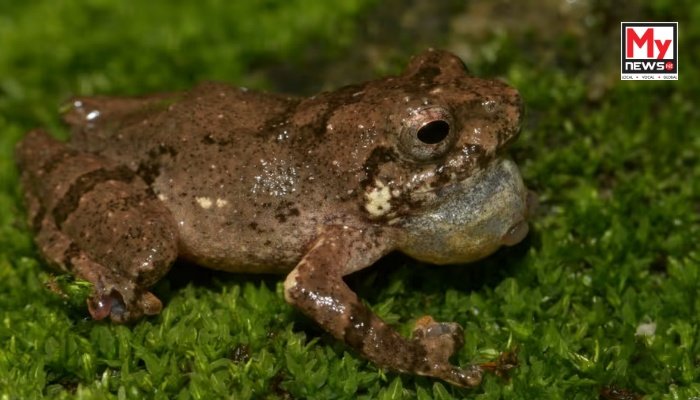New Frog Species Named After Khasi Culture Discovered in Meghalaya
Shillong: Meghalaya’s rich biodiversity has just got richer with the discovery of two new bush frog species, both named in a heartfelt tribute to Khasi language and tradition. The species, christened Raorchestes jakoid and Raorchestes jadoh, have been formally described in the latest issue of the Journal of Threatened Taxa, significantly bolstering India’s amphibian count.
The nomenclature is particularly poignant: ‘Jakoid’ is the Khasi word for ‘frog’, while ‘Jadoh’ refers to a cherished rice-and-meat delicacy that forms a cornerstone of Khasi cuisine. “Naming the frogs after Khasi words is our way of celebrating the deep ties between indigenous identity and biodiversity,” shared Holiness Warjri, the lead author of the study and a resident of Langtor village, the very site where one of these novel species was found.
Raorchestes jakoid was identified in Lawbah, situated in the East Khasi Hills, at an elevation of 815 metres. Meanwhile, Raorchestes jadoh made its appearance in Langtor, Eastern West Khasi Hills, at a loftier height of 1,655 metres. Both species are categorised as direct-developing frogs and were observed remarkably close to human settlements, primarily in bushes and low-lying trees. While this suggests a degree of ecological adaptability, it simultaneously brings to the fore concerns regarding their habitat vulnerability.
“Discovering a new species in my village and naming it after our cultural symbol ‘jadoh’ is deeply personal,” Warjri remarked, underscoring the profound connection. “It reflects our bond with the land and is a call for conservation.”
This landmark study was the result of a collaborative endeavour involving Assam Don Bosco University, Help Earth, and Mizoram University. The researchers meticulously employed morphological data, frog call analysis, and genetic sequencing (16S rRNA) to definitively confirm the frogs’ identities as previously undocumented members within the Raorchestes parvulus group.
This latest find contributes significantly to the expanding roster of endemic fauna in Meghalaya, a state nestled within the globally recognised Indo-Burma biodiversity hotspot. Beyond its scientific import, the naming of these amphibians is being celebrated as a powerful act of cultural recognition, seamlessly weaving together local language, pride, and an urgent message of conservation awareness.
Read More: Sikkim CM Unveils Key Infrastructure Boosts for Gangtok

